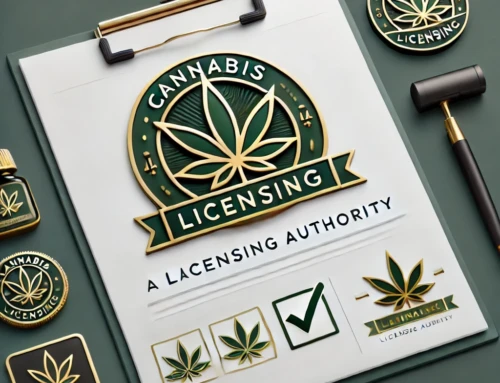US Cannabis Legalization Landscape and the STATES Act 2.0
Date: April 18, 2025
Sources Reviewed by Green Rush Advisory Group, LLC:
-
-
- “Frequently asked questions about STATES Act 2.0 – Reason Foundation” (December 14, 2023)
- “The Shifting Landscape of US Cannabis Legalization: Legislative Efforts and the Road to 2026” (Compilation of information accessed April 17, 2025, citing various sources).
-
Executive Summary:
The US cannabis legalization landscape remains a complex patchwork of state laws operating in conflict with federal prohibition. While a majority of states have legalized cannabis in some form, significant legislative and ballot initiative efforts are underway to expand access in remaining prohibitive states or to move from medical to adult-use frameworks. The 2026 midterm elections are shaping up to be crucial, with potential high-profile ballot measures in states like Florida and a significant constitutional amendment vote in Idaho that could restrict future citizen-led reforms. Amidst this state-level activity, federal legislative efforts, most notably the bipartisan STATES 2.0 Act, aim to reconcile federal and state laws, address interstate commerce, and reform taxation for the cannabis industry. This briefing document synthesizes the main themes, important ideas, and key facts from the provided sources to offer an overview of the current situation and the outlook for the near future.
Main Themes and Important Ideas/Facts:
1. The Patchwork Nature of State Cannabis Laws:
- The US exhibits a significant divergence in cannabis legality, with varying degrees of medical and adult-use legalization, decriminalization, and outright prohibition across states.
- As of early 2025, 39 states have medical cannabis programs (though scope and restrictions vary), and 24 states have legalized adult-use cannabis.
- Several states have decriminalized possession, while a minority, including Idaho, Kansas, North Carolina, South Carolina, and Wyoming, maintain full prohibition.
- The clash between state-level legalization and federal Schedule I classification creates ongoing challenges for banking, research, interstate commerce, and taxation.
2. Key States to Watch for Legalization Efforts:
- Medical Cannabis Legalization (States Currently Illegal):Kansas: Legislative progress is slow despite public support. SB294 proposes a conservative medical program. Advocates are “cautiously optimistic.”
- North Carolina: Prospects for a medical program in 2025 depend on resolving past legislative disagreements. MPP is “bullish.”
- South Carolina: A conservative medical cannabis bill (S0053) was reintroduced in 2025, having previously passed the Senate. MPP expresses “cautious optimism.”
- Wisconsin: Republican legislature favors a narrow medical program with doctor prescriptions and pharmacy dispensing.
- Nebraska: While voters approved medical cannabis in 2024, implementation faces a legal challenge.
- Adult-Use Cannabis Legalization (States with Medical Programs or Limited Access):Pennsylvania: Adult-use legalization is a top priority with bipartisan legislative efforts and strong gubernatorial support. Past efforts stalled over market structure. A vote was anticipated in early spring 2025.
- Hawaii: Adult-use legalization saw Senate passage in 2024 but failed in the House. Optimism is high for 2025.
- New Hampshire: Multiple adult-use bills with varying approaches were introduced in 2025, but prospects are considered difficult due to the new Republican governor.
- Wisconsin: Governor supports adult-use, but Republican legislature is resistant.
- Florida: A 2024 adult-use ballot initiative failed to meet the 60% threshold. A new initiative (#25-01) is planned for 2026.
3. The Significance of the 2026 Midterm Elections:
- Florida Adult-Use Initiative (#25-01):A revised constitutional amendment seeking to legalize adult-use cannabis for those 21 and older.
- Key changes from the 2024 initiative include a reduced possession limit (2 ounces of flower), explicit prohibition of public smoking/vaping and child-attractive marketing.
- Allows existing Medical Marijuana Treatment Centers (MMTCs) to sell to adults but requires the legislature to establish licensing for new, non-vertically integrated entities.
- The initiative needs approximately 891,523 signatures by February 1, 2026, and must pass with over 60% of the vote.
- Proponents emphasize potential economic benefits and the addressing of previous concerns. Opponents, including Governor DeSantis, predict it will face “big time trouble” in the Supreme Court.
- Projected annual state and local sales tax revenue could range from $195.6 million to $431.3 million (based on the 2024 analysis). The adult-use market could reach $4.9 billion to $6.1 billion in its first full year.
- Legalization would reduce cannabis-related arrests, though the initiative lacks automatic expungement. Concerns about DUI and youth use persist.
- Idaho HJR 4 (Legislative Authority vs. Citizen Initiative):A legislatively referred constitutional amendment that would grant the Idaho State Legislature exclusive power to legalize cannabis, narcotics, or other psychoactive substances, effectively prohibiting citizen-initiated ballot measures on these topics.
- Proponents argue it protects Idaho from negative consequences of drug legalization, while opponents view it as undemocratic and an attempt to circumvent public will.
- A potential citizen-led initiative for adult-use legalization in 2026 could create a complex legal situation if both measures pass.
4. The STATES Act 2.0 (Federal Legislative Efforts):
- Introduced in the House of Representatives, aiming to amend the Controlled Substances Act (CSA) so that federal marijuana provisions would not apply to those acting in compliance with state or tribal laws.
- Key Provisions:Removes marijuana from the CSA for state-compliant activities: “The legislation would remove from the Controlled Substances Act’s definition of marijuana as ‘any marijuana manufactured, produced, possessed, distributed, dispensed, administered, or delivered in compliance with State law.’ All other marijuana would remain criminal at the federal level.” (Reason Foundation)
- Allows interstate commerce of cannabis between legal states/tribes: “Section 3 provides safe passage for marijuana products in transit ‘if the originating and destination States or territories permit, as applicable, the manufacture, production, possession, distribution, dispensation, administration, or delivery of marijuana.’” (Reason Foundation)
- Clarifies FDA regulatory authority over cannabis products (drugs, food, supplements, cosmetics) and directs HHS to issue rules for other product types (including raw flower) within 180 days, including contaminant testing, manufacturing, marketing, and post-market reporting. “The act instructs the FDA to regulate any product that makes medical claims as a drug…The FDA would also regulate food or dietary supplements containing marijuana in the same way it regulates foods containing alcohol and would regulate cosmetics…in the same way it regulates other cosmetics. All other product types…would not be regulated through these pathways. Instead, the FDA commissioner would have 180 days from passage to promulgate new proposed rules…” (Reason Foundation)
- Does not directly impose a federal tax but its “congressional findings section signals an intent to find a way to impose an excise tax on marijuana that should be collected by TTB.” (Reason Foundation) It suggests a tax that is not excessive and simple to administer.
- Removes Section 280E of the IRS code for state-licensed cannabis businesses.
- Does not establish federal licensing of marijuana companies but suggests the TTB should take a lead regulatory role. “STATES Act 2.0 does not affirmatively set forth any parameters for the federal licensing of marijuana companies and does not name a lead federal agency to regulate these companies…The act states, ‘A Federal regulatory program for marijuana should require a framework that supports critical components such as proper administration and oversight, consumer safety protections, and enforcement.’ It later names the Alcohol Tobacco Tax and Trade Bureau (TTB)…specifically as an agency that should take a lead role…” (Reason Foundation)
- Addresses banking restrictions by removing state-compliant marijuana from the purview of the CSA, though practical impacts on financial institutions may be limited due to compliance complexities across states. “Although the Financial Crimes Enforcement Network promulgated rules in 2014 to ostensibly permit financial institutions to offer accounts to state-licensed marijuana businesses, those rules impose steep administrative costs…The STATES Act 2.0 would remove marijuana produced following state law from the auspices of the Controlled Substances Act. Technically, this means businesses operating in compliance with state law would no longer require extra scrutiny under anti-money laundering provisions. In practice, however, it may be difficult for financial institutions to determine that a business is fully compliant with state law.” (Reason Foundation)
- Unlike the States Reform Act, does not contain provisions for expunging prior cannabis convictions or address social equity programs. “Unlike the States Reform Act, which expunges practically all nonviolent federal marijuana convictions, the STATES Act 2.0 contains no provisions for expungement of prior convictions. It also contains no mention of social equity programs or other restorative justice efforts.” (Reason Foundation)
- Is considered an “incremental change that could garner the bipartisan support needed to move a marijuana bill through a deeply divided Congress.” (Reason Foundation)
5. Recurring Themes in Legalization Debates:
- Economic Opportunities vs. Social and Health Concerns: Legalization discussions are consistently framed by the potential for tax revenue and job creation against worries about public safety (DUI), youth use, and public health.
- Market Structure and Regulation: Debates arise over the optimal market model (state-run vs. private, vertical integration vs. wholesale), tax rates, and regulatory frameworks.
- Social Justice and Equity: Addressing the disproportionate impact of past cannabis prohibition through expungement and equitable market access is an increasingly important aspect of the conversation, though not always explicitly included in legislative or ballot initiatives.
- Political Factors: Governors, state legislatures, the ballot initiative process, advocacy groups, and public opinion all play significant roles in shaping legalization outcomes.
- Federal-State Conflict: The ongoing tension between federal prohibition and state-level legalization continues to create complexities and uncertainties for the industry and policymakers.
Conclusion and Strategic Outlook:
The US cannabis legalization landscape is dynamic and multifaceted. The near future will likely see continued state-level reforms through both legislative action and ballot initiatives, with the outcomes in Florida and Idaho in 2026 being particularly significant. The reintroduction of the STATES 2.0 Act at the federal level signals a potential, albeit incremental, pathway towards resolving the conflict between federal and state laws. However, significant hurdles remain at both the state and federal levels, driven by differing political ideologies, concerns about implementation, and ongoing debates about the societal impacts of cannabis legalization.
The STATES Act 2.0 represents a pragmatic, state-rights focused approach to federal cannabis policy. As the Reason Foundation notes, it is “only an incremental step toward full federal legalization of marijuana” but one that “could garner the bipartisan support needed to move a marijuana bill through a deeply divided Congress.” Its focus on respecting state laws, facilitating interstate commerce between legal states, and addressing tax disparities (280E) could bring greater stability and clarity to the industry, even without fully ending federal prohibition.
Ultimately, the future of cannabis legalization in the US will depend on the continued interplay of these state and federal efforts, the evolving public opinion, and the ability of advocates and policymakers to address the complex economic, social, and health considerations associated with this issue.





